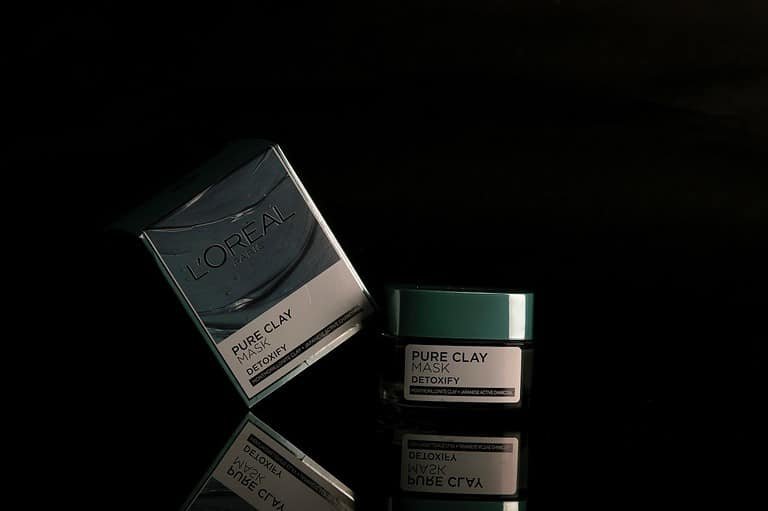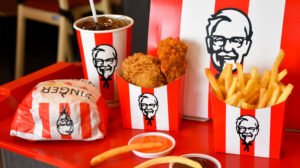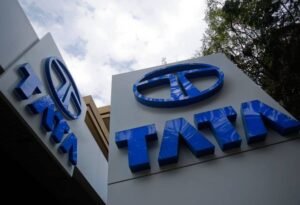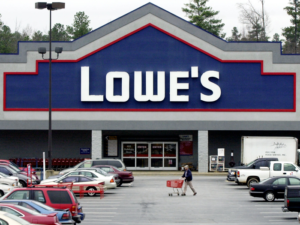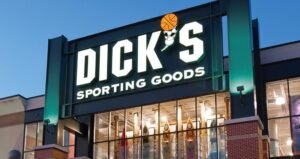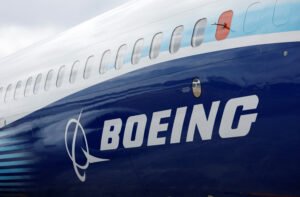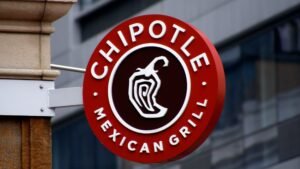Welcome, beauty enthusiasts and trendsetters! Today, we embark on a fascinating journey into the world of L’Oreal – a powerhouse in beauty and cosmetics.
Prepare to be captivated by the tale of this iconic brand that has left an indelible mark on the industry. From its humble beginnings to its global domination, we delve into the story behind L’Oreal’s rise to greatness.
Jump Ahead To :
Brief History & Background of L’Oreal
L’Oreal’s roots trace back to the year 1909 when a visionary chemist named Eugène Schueller created a hair dye formula in his very own kitchen. Little did he know that this humble experiment would lay the foundation for one of the most influential beauty empires in history.
As time passed, Schueller’s innovation grew from strength to strength, resulting in the official establishment of L’Oreal in 1919. The company’s unwavering commitment to research and development propelled it forward, leading to breakthroughs in hair care, skincare, makeup, fragrances, and beyond.
Through strategic acquisitions over decades, L’Oreal expanded its portfolio with renowned brands like Lancôme, Maybelline New York, Kiehl’s, Garnier, and many more. This growth strategy allowed them not only to diversify their offerings but also to solidify their position as a global leader in beauty products.
Overview of L’Oreal’s Global Presence and Market Position
Today, L’Oréal stands tall as one of the most recognized names in cosmetics worldwide. With operations spanning more than 150 countries and serving millions of customers daily, they have firmly established themselves as a force within the industry. From the shimmering streets of Paris to the bustling markets of Tokyo, L’Oreal’s products can be found in nearly every corner of the globe.
The brand’s relentless pursuit of innovation, combined with its ability to cater to diverse consumer needs, has led to a stronghold in both mature and emerging markets. Moreover, L’Oreal’s market position is nothing short of impressive.
With a wide-ranging portfolio that encompasses everything from luxurious high-end brands to accessible drugstore favorites, they have successfully carved out a space for themselves in every segment of the beauty market. This versatility has enabled them to capture consumer loyalty across various demographics and maintain their competitive edge.
So buckle up as we embark on this enlightening exploration into the inner workings of L’Oreal’s SWOT analysis. We shall uncover their strengths, weaknesses, opportunities, and threats that shape their strategic decision-making process as they continue to enchant us with innovative beauty solutions.
Strengths of L’Oreal
An Extensive Product Portfolio Across Various Beauty Categories
When it comes to beauty, L’Oreal has mastered the art of offering a diverse range of products that cater to every beauty aficionado’s needs. From makeup that enhances your features to skincare products that nurture and rejuvenate your skin, L’Oreal has got you covered.
They understand that beauty is not limited to one aspect, so they have expanded their portfolio to include haircare products that give you luscious locks and fragrances that leave a lasting impression. With L’Oreal, you can indulge in a comprehensive beauty experience all under one roof.
Their portfolio includes iconic brands like Maybelline, Lancôme, Garnier, and many more – each with its own personality and style. This ensures that no matter your age, gender, or personal taste, there is a brand within L’Oreal’s repertoire that resonates with you.

Strong Research and Innovation Capabilities
L’Oreal stands at the forefront of research and innovation in the beauty industry. Their commitment to scientific advancement is evident through their investment in state-of-the-art research facilities and strategic partnerships with renowned scientific institutions across the globe.
This allows them to stay ahead of the curve by developing revolutionary technologies and groundbreaking ingredients. By constantly pushing boundaries, L’Oreal ensures that their products are not only effective but also deliver exceptional results backed by scientific research.
Global Brand Recognition and Reputation
With a rich heritage and a long-standing presence in the beauty industry, L’Oreal has built a global brand that resonates with consumers worldwide. Their commitment to quality, innovation, and accessibility has earned them the trust and loyalty of millions.
Moreover, L’Oreal’s successful marketing campaigns have captivated audiences and reinforced their position as a leader in the beauty sector. Coupled with endorsements from renowned celebrities who swear by L’Oreal’s products, their brand recognition is unparalleled.
When you think of beauty, L’Oreal is undoubtedly one of the first names that come to mind. Their strengths lie in their extensive product portfolio across various beauty categories.
Whether you’re seeking makeup, skincare, haircare, or fragrances – they have it all. Their range of brands caters to different consumer segments ensuring there is something for everyone.
Additionally, their strong research and innovation capabilities enable them to stay at the forefront of scientific advancements in the industry. Their global brand recognition and reputation make them a trusted choice for consumers worldwide.
With these strengths combined, it’s no wonder why L’Oreal continues to dominate the beauty market year after year. Stay tuned for more insights into L’Oreal’s SWOT analysis as we explore its weaknesses and opportunities in our upcoming sections!
Weaknesses of L’Oreal
High Dependency on Mature Markets
When it comes to weaknesses, L’Oreal does have a couple of areas that require attention. One of these is its high dependency on mature markets like Europe and North America. While these regions have been lucrative for the company over the years, they also pose certain challenges.
The markets here are saturated with various beauty products, making it difficult for L’Oreal to achieve substantial growth. Competing against established brands in these markets requires constant innovation and differentiation to stand out from the crowd.
Challenges in Penetrating Emerging Markets
L’Oreal’s expansion into emerging markets has not always been a smooth ride. Cultural differences play a significant role in hindering the company’s ability to penetrate these markets effectively. Preferences, beauty standards, and purchasing behaviors can vary significantly across different cultures and regions.
L’Oreal must invest time and effort in understanding local consumers’ needs and preferences to tailor their marketing strategies accordingly. Adapting products to suit diverse cultural demands can be a complex undertaking but is crucial for success in emerging markets.

Complex Organizational Structure due to Numerous Acquisitions
L’Oreal’s growth strategy includes acquiring various brands that complement its existing portfolio. While this approach has enabled them to expand their product offerings and reach new consumer segments, it has also resulted in a complex organizational structure.
Managing multiple brands with diverse positioning requires careful coordination and integration within the company’s overall strategy. Ensuring synergies between acquired brands can be challenging, as each may have its own unique culture, operational practices, and target audience.
Potential Difficulties in Integrating Diverse Brands into a Cohesive Strategy
With numerous acquisitions under its belt, L’Oreal faces the task of integrating diverse brands into a cohesive strategy. Each brand may have its own established identity, consumer base, and market segment.
Balancing the need to maintain brand equity while leveraging synergies across the portfolio can be a delicate balancing act. L’Oreal must carefully evaluate how each brand can contribute to its overall growth and ensure that their individual strengths are effectively utilized within a unified strategic framework.
Decision-Making Processes may be Slower due to Multiple Layers of Management
As L’Oreal has grown and expanded globally, it has naturally accumulated multiple layers of management. While this structure allows for effective delegation and specialization within the organization, it can also lead to slower decision-making processes. With more layers involved in decision-making, there is a higher likelihood of information bottlenecks or delays in obtaining approvals.
Streamlining communication channels and empowering decision-makers at various levels becomes crucial for maintaining agility and responsiveness within such a hierarchical structure. While L’Oreal boasts remarkable strengths in terms of product diversity, research capabilities, and global recognition, it is not without its weaknesses needing consideration.
The company must address challenges related to dependence on mature markets by seeking new avenues for growth. Overcoming cultural differences when entering emerging markets demands careful localization strategies.
Additionally, managing the complexity resulting from multiple acquisitions requires focused integration efforts while ensuring that decision-making processes remain efficient despite organizational layers. By addressing these weaknesses head-on, L’Oreal can continue its trajectory as a leading force in the beauty industry.
Opportunities for L’Oreal
Growing demand for natural/organic products
In recent years, there has been a significant shift in consumer preferences towards natural and organic beauty products. L’Oreal can capitalize on this trend by expanding its offerings in this segment.
By acquiring or partnering with established natural beauty brands, L’Oreal can tap into the growing market demand and cater to environmentally conscious consumers. This move would not only enhance their product portfolio but also align with their commitment to sustainability and responsible sourcing.
Expansion into the clean beauty segment through acquisitions or partnerships
Clean beauty, which focuses on using non-toxic ingredients and embracing eco-friendly practices, is gaining consumer traction. By strategically acquiring or collaborating with clean beauty brands, L’Oreal can position itself as a leader in this emerging sector. This expansion would attract customers who prioritize transparency, safety, and ethical production methods in their beauty routines.
Development of sustainable packaging solutions
As sustainability becomes a growing concern globally, there is an increasing demand for eco-friendly packaging solutions. L’Oreal has the opportunity to develop innovative packaging that reduces waste and environmental impact while maintaining the luxurious feel associated with their products. By investing in research and development of sustainable packaging materials such as bioplastics or recyclable materials, they can not only meet customer expectations but also set industry standards.
Increasing male grooming market
The male grooming market has experienced significant growth over the years, presenting a promising opportunity for L’Oreal to expand its reach beyond traditional women’s beauty products. By launching specialized product lines tailored to male consumers’ needs such as skincare specifically designed for men’s skin concerns or targeted hair care products, they can capture a larger share of this growing market. Through effective marketing campaigns that promote inclusivity and diversity, L’Oreal can connect with male consumers and establish a strong presence in this segment.
Conclusion
L’Oreal, with its extensive resources, innovative capabilities, and global brand recognition, is well-positioned to capitalize on the opportunities presented by the beauty industry. By leveraging the growing demand for natural/organic products, expanding into the clean beauty segment through acquisitions or partnerships, developing sustainable packaging solutions, and tapping into the increasing male grooming market, L’Oreal can continue to thrive and stay ahead of its competitors.
The company’s commitment to innovation and sustainability will not only attract today’s conscious consumers but also shape the future of the beauty industry. With L’Oreal’s dedication to excellence and continuous improvement, we can expect exciting developments that will redefine beauty standards while meeting consumer needs in an increasingly conscious and inclusive world.
